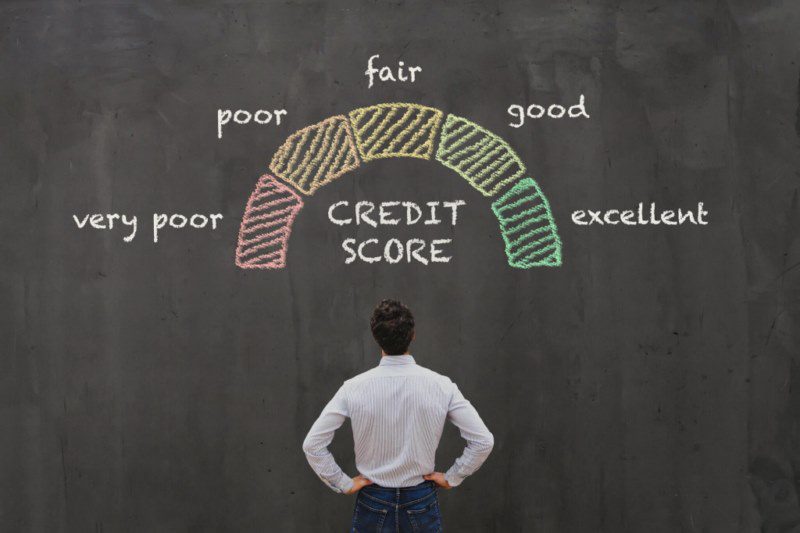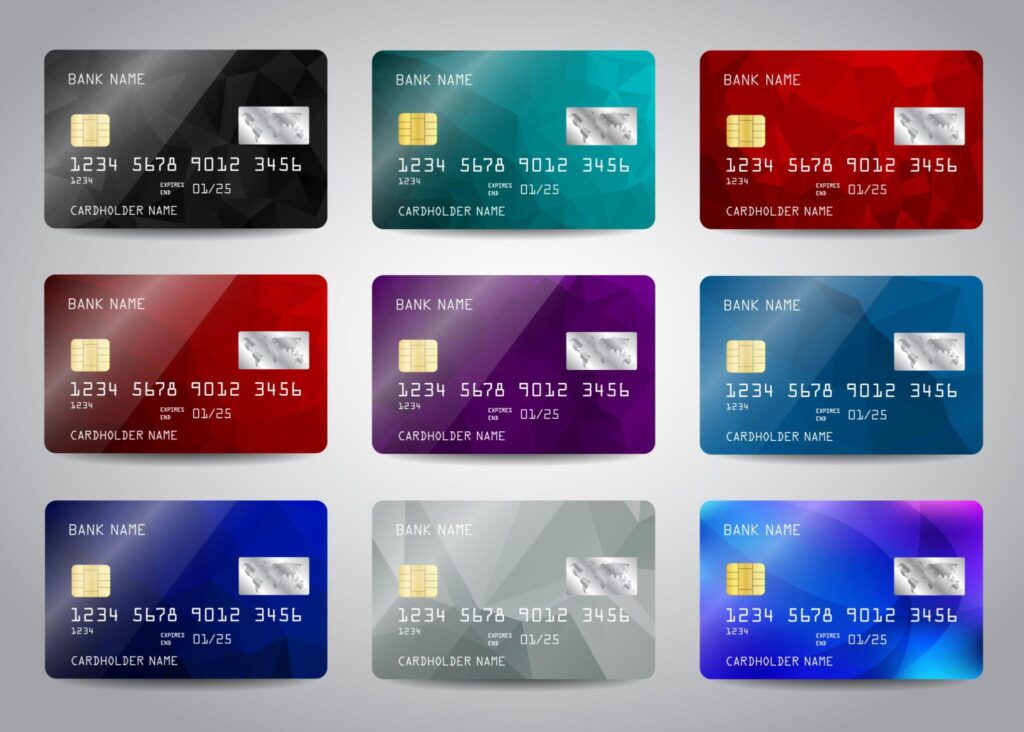A credit score is a three-digit number calculated based on your credit history that lenders use to assess your reliability and risk level as a borrower. Understanding what goes into your score and tips to improve it are vital for achieving financial goals.
Your credit score is one of the most critical factors affecting your financial health and lifestyle choices. Good Credit can mean access to competitive interest rates that save thousands on loans for buying cars and homes, paying for college, or even monthly expenses on credit cards. On the other hand, poor Credit due to late payments, high balances, or other negative marks makes even necessities more expensive with higher interest rates or denial of applications. Luckily, by learning the key components of FICO and VantageScore, maintaining responsible credit habits, and correcting reporting errors, most people can rebuild and improve their credit health over time.
What Exactly Does a Credit Score Measure?
Defining a Credit Score
At its basic level, a credit score indicates to lenders your statistical risk of missing future payments based on how responsibly you’ve managed debts in the past across your credit history. Scoring models analyze the timing and frequency of payments on all your credit accounts – credit cards, retail accounts, student loans, and mortgages. Accounts, both open and closed, are considered, as well as diverse factors examining the trajectory along your entire lifetime use of consumer credit.
The most widely used models – the FICO score and the VantageScore – range between 300 and 850 points, quantifying this risk analysis into an easy-to-understand metric where a higher score signals better lending risk. People with higher scores tend to make at least minimum payments on time each month reliably, maintain low credit card balances, and apply for new Credit only sparingly. Those behaviors over months and years translate to the less projected risk of short or long-term financial troubles.
Not an Indication of Income or Assets
In contrast to an individual’s income, assets, or job stability, which gives direct insight into the current ability to take on more debt, credit scores instead indicate the likelihood of continuing responsible money management based on history. Someone early in their career with a modest income but excellent payment timing and healthy credit habits can achieve very high scores. On the other hand, high net-worth individuals can have shallow scores due to making financially risky decisions. Credit scores let lenders estimate risk irrespective of borrower circumstances.
Modeling Future Behavior
Scoring models crunch vast amounts of historical consumer data, predicting statistical patterns in payment behaviors. They identify trends among large samplings over decades to model out expected defaults and risk tolerances for a given score. Someone with an exceptional 800 FICO score has only a 1% chance historically of defaulting in the next two years. Over 8% of borrowers below 600 have experienced severe delinquency historically, making that a very risky score group requiring high-interest rates to offset anticipated losses from defaults. Credit score analytics have sharpened to a science – predicting your future reliability.
What is a credit score?
A credit score is a three-digit number calculated based on your credit history to predict your reliability as a borrower. Scores range from 300 to 850. Higher scores signal lower risk, enabling access to better loan interest rates.
What Impacts Your Credit Score?
Key Factors that Determine Your Score
The models analyze five primary areas in calculating scores with some variation in exact weighting: payment history (35%), amounts owed, aka credit utilization (30%), length of credit history (15%), new credit requests (10%) and credit mix (10% by most estimates). Continuously responsible habits in those areas will raise your score over time. In contrast, missing payments, maxing cards, or a string of new financing applications can lower it quickly in the short term.

Payment History
Unsurprisingly, whether payments are made fully and on time is most critical, making up over a third of a score’s factors. Even one 30, 60, or 90-day late payment can show up and dramatically lower your credit score if reported. That’s why setting up automatic payments or carefully tracking due dates helps avoid disaster from a singular slip-up. Multiple late payments signal a worsening financial profile. Still, if kept in the minority amid otherwise good payment records, they can recover over a few years of diligent, on-time payments. Defaulting and being sent to collections is even more damaging than staying on your history with full force for seven years.
Total Debt Burden
In addition to actual payment timeliness, maintaining low balances compared to total available credit limits indicates reliably avoiding the risk of overextension. This “credit utilization ratio” should stay low on all active accounts and dramatically affects your score once you pass 30% utilization per account or across all revolving Credit. Even high earners can observe score drops from high card balances over months or years. The more available Credit you have across accounts with low balances maintained long-term, the better for this pivotal score factor.
Length of Credit History
Having open, active credit accounts (e.g., cards, loans, mortgages, etc.) with years of positive history stabilizes your score by proving sustained responsible usage over time. Older accounts appear less prominently in score calculations, but even dormant cards you’ve held for years contribute to a foundation of reliability. Too short a verifiable history leaves uncertainty and makes other factors like payments and utilization weigh disproportionately high. As such, having long-term access to consumer credit solidly boosts overall scores.
New Credit Applications
An indirect factor examined is applying for and opening new Credit, signaling potentially increased risk tolerance by the borrower and incurring hard credit check inquiries when initiated by lenders. Applying for multiple new credit cards or loans in a short period automatically lowers your score temporarily. However, spaced-out moderate applications for consumer credit, when paired with wise usage of new Credit, prove beneficial over the long term by diversifying history, raising total limits, and eventually increasing the average length of positive history.
Credit Mix
The scoring models also consider the mix and diversity of credit accounts held, including installment loans, retail cards, credit card revolving balances, student loans, and mortgages. Having active experience managing different credit types improves scores more than a history exclusive to credit card debt, for example. It proves proficiency in handling varied types of lending terms over time. Additionally, it improves the meaning of overall owed balances – keeping revolving card utilization lower when sizable fixed installment loans are already being managed sends positive signals to the models about avoiding overextension.
How Scores Are Calculated
The Math Behind Credit Scores
While the full details of proprietary algorithms by Fair Isaac Corporation (FICO) and VantageScore are not publicly released to maintain efficacy, general outlines on score criteria weighting and grade breakdowns are well documented. The models analyze the five critical categories discussed prior – payments, usage, history length, new Credit, and mix – as the primary direct inputs. Exact formulas evolve between versions and models but constants allow some reverse engineering and understanding. As outlined in the attached article, these five primary factors – payment history, amounts owed, length of credit history, types of Credit, and new Credit – comprise the majority of calculations behind most major credit scores.
Contribution of Different Factors
Payment history at 35% contribution and utilization at 30% have the most weight by far, together explaining almost two-thirds of algorithm results. Length of positive verified credit history directly contributes around 15%, while new credit checks and applications make up 10%. The final 10% is estimated to come from your credit mix diversity across loan types. So while all five factor in, clearly avoiding late payments and keeping balances low essentially assure decent scores in the absence of extremely poor marks in other areas.
Calculating Your Credit Grade
The FICO and VantageScore grading scales both range from 300 to 850, partitioning into commonly recognized tiers:
- Exceptional Credit: 750-850
- Good Credit: 700-749
- Fair Credit: 650-699
- Poor Credit: 600-649
- Very Poor Credit: 300-599
The exact number is less critical than falling into an accepted “grade” bucket that determines access to prime competitive rates versus high-risk subprime offers. As covered next, climbing up just one band, from fair to good merit, can massively improve lending options.
Model Differences and Versions While both provide numerical risk evaluations in the same range, FICO and VantageScore arrive at distinct calculations for a given consumer due to proprietary methodologies. FICO scores are considered more recognized by major lenders, with flagship models like FICO 8 remaining widely adopted, but competitor VantageScore reaches smaller local lenders. Both companies frequently update their suites – FICO versions span 8 to 10 while VantageScore progressed through versions 3 to the new 4 – but core concepts remain stable. It should be noted that there are three major credit bureaus in the U.S. – Equifax, Experian, and TransUnion – that dominate the market for collecting and analyzing consumer credit information.
For most consumers, focusing on the basic score factors proves sufficient to improve outcomes regardless of model variations used by FICO, VantageScore, or the credit bureaus.

What’s Considered a Good or Bad Score?
Qualitative Meaning of Score Ranges
More than the precise three-digit number, understanding credit tiers and associated lending consequences provides meaning and motivation to improve scores. Eligibility for prime rates on large purchases contrasts severely for exceptional versus bad Credit.
Exceptional Credit (750+)
Exceptional credit scores start at 750. This gives access to the most competitive interest rates below 4% for large purchases like homes or luxury cars. For example, someone with a 780 score could qualify for a 30-year fixed mortgage with a rate of around 3.5%. Premium travel rewards credit cards also target 750+ scores by offering lucrative sign-up bonuses of 50,000+ points for spending minimums.
Good Credit Score (700-749)
Good credit typically means scores from 700 to 749. Interest rates and terms won’t be rock-bottom, but will still be competitive. With a 720 score, someone may qualify for a $300,000 mortgage with 5% down at 4.25% interest or a basic cash-back credit card. Being over 700 keeps financing options open, though missing the premier bracket.
Bad Credit Score (300-619)
Bad credit encompasses scores below 620 to as low as 300. This includes subprime mortgages with around 8% interest, payday loans with APRs exceeding 400%, and subprime auto loans with 14% interest or more. People with poor credit face steep financing costs that impede major purchases. For example, a 575 credit score may only qualify for a $5,000 auto loan at 22% APR compared to 3% for exceptional scores. Improving bad credit scores takes diligence over years, but aids financial mobility.
Summary conclusion
A credit score is a crucial three-digit number predicting how reliably someone will repay debts based on their financial history. Scores range from 300-850, with higher numbers indicating a lower risk that enables access to better interest rates. Models like FICO and VantageScore analyze five key factors: payment history, debt burdens, credit history length, new applications, and credit types used. FICO scores see the most widespread adoption. Late payments severely damage scores in the short term, but responsibly managed credit cards and loans raise scores in the long term. 750+ counts as exceptional Credit, 700-749 as good, and 650-699 as fair. Higher tiers unlock better rates on mortgages, credit cards, and loans.
Exceptional Credit saves thousands over a lifetime. Anyone can rebuild Credit by diligently avoiding late payments, keeping card balances under 30% of limits, and occasionally opening new Credit after research. With sustained responsible money management, most people can reach 700. The higher one’s score, the more financially secure their future.
What are the factors that make up your credit score?
The main factors are payment history (35%), debt burdens/credit utilization (30%), credit history length (15%), new credit applications (10%), and types of credit used (10%). Key factors are avoiding late payments, keeping balances below 30% of the limit, and building a long, positive history.
What is considered an excellent or terrible score?
Scores above 750 are exceptional, with access to prime rates below 4%. 700-749 is good credit, 650-699 is fair, and below 600 signals high risk. Exceptional credit unlocks top financial products and lowest rates. Bad credit leads to subprime offers or denial.
How can you rebuild or improve a low score?
Responsibly managing credit cards by paying on time and keeping low balances compared to limits will raise a score over time. Limiting new applications, diversifying credit types, and maintaining open, active accounts can also help. It takes diligence, but disciplined habits can rebuild most scores to over 700.
Why do credit scores matter so much financially?
Higher credit scores unlock considerable savings over your lifetime. With excellent 750+ credit, buying cars and homes and using credit cards becomes much cheaper thanks to ultra-low interest rates below 4%. Poor credit forces expensive subprime financing, costing thousands more in interest for duplicate purchases.

